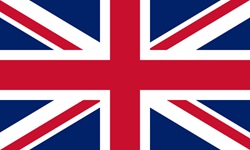
All surgeries related to aesthetic improvement and functional improvement of the nose outside the nose are called rhinoplasty. The nose carries characteristic features of the person. The nose, which is highly effective in aesthetic appearance, can seriously change the facial appearance even with minor changes.
The desired result in a good rhinoplasty surgery is not only to meet the aesthetic expectations of the patient, but also to obtain a natural result that is suitable for the general face. The naturalness of aesthetics is important. Before the operation, the points that the patient cares about are determined, the patient’s deformities and the general condition of the face are taken into consideration.
Apart from aesthetic appearance, an important issue in rhinoplasty surgeries, if necessary, is to ensure that the nose is in good condition in terms of functional aspects, to correct the problems that may cause nasal congestion and to enable the patient to breathe better.
Process Before Rhinoplasty (Rhinoplasty) Surgery
Before the operation, you should consult your doctor to determine how you will take blood thinners and other medicines.
Nose Aesthetics (Rhinoplasty) Surgery
The operation is performed under general anaesthesia over a period of 2-4 hours.
Micro rasps, microtips and piezo device, which is an ultrasonographic method, are used in the operation. Depending on the condition of the nose, the doctor applies open or closed rhinoplasty techniques and a protective rhinoplasty technique called preservation rhinoplasty. In the operation, after the deviated septum is corrected, all deformities, the hump (arch) on the back of the nose, the nasal bone side walls, and the cartilages at the tip of the nose are corrected. If the patient has had previous surgery and/or if the cartilage in the nose is not sufficient, cartilage taken from the ear is used. Absorbable sutures are placed in the nose. Silicone tampon is placed, the back of the nose is plastered and aesthetic plaster is placed.
In the first days, there may be mild bruising and swelling around the eyes and nose. It largely passes at the end of the first week.
After Rhinoplasty Operation
After 1 week, the plaster is removed.
For 15 days, no water contact should be made to the nose.
For 2 months, glasses should be worn.
It is necessary to lie at an angle of 30 degrees in the first weeks.
The nose is fully in the desired condition within 6 months – 1 year.
1,400
Happy Patients
65
Qualified Doctors
160
Clinic Rooms
2
Hospital Partners

